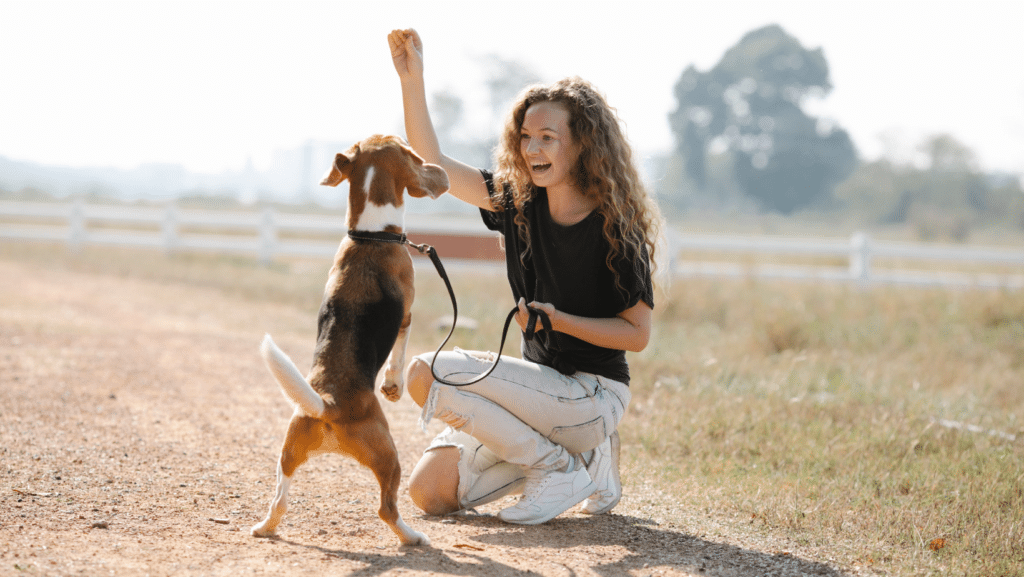12 Tips on Adding a New Pet to the Family

Pets are family, and when it comes to adding a new furry friend to the mix, there are some considerations everyone needs to take into account.
Read on for essential tips on how to safely and successfully add a new pet to your family!
1. Ask the Right Questions
Before you even start looking for a new pet, you must ask the right questions to ensure you are ready. Whether you have had pets for years, or you want to adopt a new furry friend, consider some of these aspects with the entire family:
- Do you have time to devote to a new pet?
- Do you have the space to allow for a new pet to be comfortable?
- Do you have children in the home, and if so, how old are they?
- Does your current pet get along with other animals, or does it prefer to be the only pet in the home?
- Does your current pet get along with the type of pet you want to add to the mixture?
- Does anyone in the household have allergies to pets or a specific type of pet?
- How old is your current pet in relation to the pet you want to get?
- Should you invest in pet insurance if you don’t have it already?
- Who will be primarily responsible for the new pet’s care?
Having these discussions with the entire household is important before taking any steps to bring home another pet and will ensure a smoother transition for both the pet and people alike!
2. Decide on a Type of Animal
When it comes to pet adoption, the options are nearly endless. You can find a pet for every preference, from cats to dogs, birds to small mammals! Don’t get overwhelmed with the choices and consider what kind of pet is right for you and your family.
If you already have a cat or dog, introducing another might be the safest and easiest way to add another pet into your household. But some animals can get along with pets outside their species, too, so it’s worth considering all the angles!
What kind of special care do particular animals require, and can you easily provide them? What about lifespan—cats can live for a very long time, whereas small mammals might only live for a couple of years. These are all key considerations for everyone involved.
3. Visit the Vet

Before you even bring your new friend home, it’s a good idea to talk to a veterinarian. If you already have a pet, take them in to be checked by the vet for any health conditions or illnesses that a new addition could exacerbate.
Additionally, if this is your first new pet in a while, the vet will have plenty of information for you to research so that the process goes smoothly. You can also make an initial appointment for the days after bringing a new pet home, just for a check-up.
If your new pet does not have all its vaccinations or needs to be spayed or neutered, it’s wise to get that over with soon. Bring your pets to the vet for a check-up at least twice a year to ensure they are in the best possible health and prevent issues before they arise.
4. Pet-Proof Your Home
Even if you already have a pet in the household, you might need to take extra precautions when it comes to the new addition. They won’t know the rules and will likely be more curious than an established pet!
Make sure that your house is entirely pet-proofed, including covering exposed outlets, storing cleaning supplies in safe locations, closing exposed water sources, and gating off-limit areas.
Prepare for chewing—your new addition will likely get their teeth into things around the house as they settle in. So, while pet-proofing your surroundings, make sure to look out for items that can appear like chew toys to nervous or bored pets.
5. Make Proper Introductions
Once you bring your new pet home, it’s crucial to properly introduce them to your home, family, and other pets. When welcoming the new addition, make sure you supervise the new pet closely, particularly when around other animals or children.
Keep the new addition on a leash or in a carrier for the first couple of hours while everyone gets to know each other. This will avoid panic or uncontrolled behaviors but still allow for sniffing, licks, and petting to help the pet settle in.
Additionally, you should separate the new pet if they become too anxious or excited. Most new pets only need around 10 or 15 minutes away from the situation before they can calm down and go back to introductions.
6. Take Part in Training

No matter what, your new pet will require some amount of training. It’s best to hold daily training sessions to create regularly structured interaction—this includes basic commands, safe play practices, interaction with other pets, and leashed walks.
Not only will your new pet get the most out of daily training and the mental stimulation it provides, but you will also end up with an incredibly well-behaved animal that fits right into your family!
7. Create Safe Spaces
Whether you have other pets already or are simply introducing your new friend to a household of people, it’s a good idea to allow for safe spaces.
Create food and water stations separate from existing pets or busy family areas. Your new pet will feel less stressed or territorial if its food is in a safe location. You should also provide individual toys for new pets to have their own special items.
And because everyone needs a space to feel safe in and an area where they can go to relax, you should have crates, beds, or other structures set up for your new pet to take a break when needed. Cats usually prefer windows, and dogs like views of the doorway.
8. Create a Bathroom Schedule
Your new pet will need to learn where to do its business, so making a plan for pet potty times in advance is advisable. If your new pet requires a litter box, make sure it is separate from other pets’ toilet areas and in a safe location.
Make sure you use the same command every time you take your new dog outside to do its business, or steer your cat towards the litter box, to reinforce verbal potty training. Be patient with them—even if an accident occurs, your pet (and you!) will learn from it.
9. Encourage Socialization

Exposing your new pet to various environments and interactions is essential for creating a healthy bond with them, but make sure to always be in control of the situation.
Visit parks, have pet playdates, take them in the car, and go to the vet. These are all activities that will encourage your pet to be comfortable in different social situations and around all types of people and animals.
10. Assign Responsibilities
Ensure that you have established who will be responsible for various tasks associated with the new pet. The last thing you want is to argue about who should take the new puppy for a walk on the first day!
By dividing and assigning tasks, you can make the entire process a smooth transition. Decide who should be responsible for feeding, litter boxes, and playing, and make a schedule for it to avoid confusion or repeated tasks!
11. Be Patient
Any new pet will have an adjustment period to go through, so being patient with them is crucial. Keep yourself calm and collected, and your pets will eventually follow suit once they settle in. Training is easier without a frustrated attitude.
And keep in mind that disputes will happen if you are introducing another pet into your family! Perhaps the new addition gets on the nerves of your existing pet, or the children get a bit too grabby—separate them for a time and establish healthy relationships first.
No two pets will take the same amount of time or effort to train, so consistency and patience are essential. Your pet does not want to frustrate you with any bad behaviors but will have to learn the rules of this new household.
The best way to ensure your pet settles in as fast as possible is to dedicate between 10 to 45 minutes a day to brush up on training and commands and to spend plenty of quality time with your pet outside of that.
12. Get Pet Insurance
Protect yourself from any unanticipated situations or emergencies with pet insurance coverage. Experts recommend taking out insurance for your new pet from the day you bring them home, just in case.
Make sure your coverage will handle emergency veterinary procedures, illnesses, vaccinations, and more. Even if your new pet is healthy and happy, you should ensure that you are prepared and have the peace of mind that pet insurance provides.
Now that you have asked the right probing questions, it is time to decide if now is the perfect time to add a new furry friend to your family. If it is, be sure to follow the above tips to make for a smooth transition.



